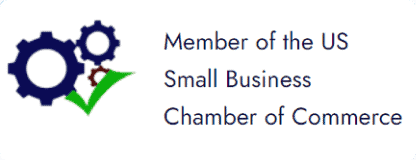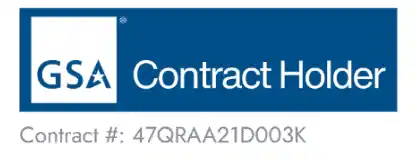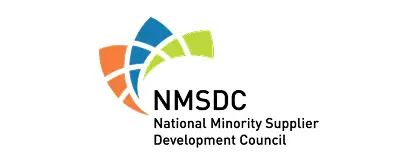Families First Coronavirus Response Act (FFCRA)
The Emergency Sick and Family Leave Measure for American Workers
Families First Coronavirus Response Act (FFCRA) is an emergency initiative in response to the impact of Coronavirus on American workers and businesses.
There are a number of relief measures the FFCRA provides, including:
- Paid sick leave/time
- Paid family and medical leave
- Family and Medical Leave Act (FMLA) expansion
- Employer tax credits
- Unemployment insurance expansion
- Nutrition aid
Before we get into the details, here is a snapshot of what you need to know relating to the Coronavirus paid sick and family leave:
- Employers with fewer than 500 employees must provide paid sick time or paid family leave to eligible employees
- Some employers with fewer than 50 employees may be exempt from providing paid sick leave
- Employees are entitled to their regular rate of pay for 10 days if they can’t work because they are in quarantine or isolation due to a federal, state, or local government order; the advice of a healthcare provider; or have coronavirus symptoms and are seeking a medical diagnosis
- Employees are entitled to two-thirds their regular rate of pay for 10 days if they are using paid sick time to care for someone who is in quarantine or isolation due to a federal, state, or local government order or the advice of a healthcare provider
- Employees are entitled to two-thirds their regular rate of pay (after 10 days, which employees can cover with paid sick leave or accrued time off) for 10 weeks if they are using paid family leave to care for a child whose school or childcare provider closed due to the coronavirus
- Employers who provide paid leave to employees are entitled to an employer tax credit, worth 100% of the paid leave, plus 100% of the employer Medicare share associated with the leave wages
- Employers do not have to pay the employer Social Security tax share on leave wages
- The leave benefits are not retroactive
According to the act, these effects begin taking place “no later than 15 days after the date of enactment,” which was March 18. The FFCRA provides paid leave for employees with qualifying reasons related to COVID19.
There are two paid leave types:
The Emergency Paid Sick Leave Act (EPSLA – 2 weeks of leave)
This provides full-time employees with 10 days of paid time off – at their regular wage rate – if they have to quarantine or isolate due to the coronavirus. It also provides employees with 10 days of partial paid time off—at two-thirds their regular wage rate—if they are caring for someone who must quarantine or isolate due to the coronavirus.
Full time employees get the full 80 hours while part time employees get the number of hours, they average over a two-week period.
Rate of Pay
The sick or quarantined employee is entitled to their regular rate of pay but not to exceed a daily rate of $511.00 or ($5110 over 10 days).
Employees taking EPSLA to care for someone who is sick or quarantined are entitled to two thirds of their regular rate of pay, not to exceed $200.00 per day (or $2,000.00 over a 10-day period).
Eligibility
All employees regardless of how long they have been employed at your business
Applies to employees who are:
- Subject to a federal, state, or local quarantine or isolation order relating to the coronavirus
- Advised by a healthcare provider to self-quarantine due to coronavirus concerns
- Experiencing coronavirus symptoms and seeking a medical diagnosis
- Caring for someone who is subject to a quarantine or isolation order or advice from a healthcare provider
- Experiencing a substantially similar condition specified by the Secretary of Health and Human Services, in consultation with the Secretaries of the Treasury and Labor
The Emergency Family and Medical Leave Expansion Act (EFMLEA – 10 weeks of leave)
This provides full-time employees with up to 10 additional weeks of paid time off – at two-thirds their regular wage rate – if they must care for a child, under the age of 18, whose school or place of care is closed in response to the coronavirus.
The first 2 weeks can be unpaid, or the employee can use their EPSLA (#1 above). The employee can also use their accrued PTO, but you cannot force them to use their accrued PTO if they don’t want to.
Rate of Pay
Employees taking EFMLEA leave care a child whose school or childcare center has closed are entitled to two-thirds of their regular rate of pay, not to exceed $200.00 per day (or $10,000.00 over a 10-week period).
Eligibility
All employees who have been employed for 30 or more calendar days at your business.
Applies to employees who are caring for a child whose school, place of care, or childcare provider is closed or unavailable due to coronavirus precautions.
To be eligible the employee also must not be able to work or telework (work-from-home). If the nature of the employee’s job allows telework and telework is approved by the manager, then the employee is not eligible for EFMLEA.
Required FFCRA Poster
The Department of Labor (DOL) has released a mandatory employee rights poster for the FFCRA. It should be posted or distributed to employees electronically (via email or online portal) by April 1. The required poster can be downloaded here.
Enforcement of FFCRA
The DOL will not bring enforcement actions against employers for violations of the FFCRA prior to April 17, 2020, provided that the employer has made reasonable, good faith efforts to comply with the Act. You can read more about the brief non-enforcement period here.
New Guidance from the DOL on Administering FFCRA Leaves
We strongly suggest that employers read through the entire Question and Answers document, so they have an understanding of how the leaves work. The following are some highlights from the updated guidance:
- These leaves are not available to employees with reduced hours, furloughed employees, or employees’ whose workplaces are closed. See questions 23-28.
- These leaves are not available to employees whose workplaces are closed due to a federal, state, or local shelter-in-place or stay-at-home orders, or due to business slowdowns. See question 23.
- These leaves (and payroll tax credit) are not retroactive. Employees are not entitled to pay under these leaves if they were absent or out of work (for any reasons) prior to April 1. See question 13.
- Both emergency paid sick leave (EPSL) and emergency Family and Medical Leave (EFMLA) can be taken on an intermittent basis in certain situations. See Questions 20-22 for explanations about when intermittent leave is allowed.
- Employees may not be required to use other forms of paid leave prior to or concurrently with EPSL or EFMLA. See questions 32 and 33.
- Employers should keep documentation to show that employees who received leave were actually in need of leave. The documentation requirements will be outlined in soon-to-be-released IRS guidance. See Questions 15 and 16.
What the employer gets for providing sick leave benefits
The government is providing two employer benefits for providing the EPSL and EFMLA leave payments:
- Exemption from Social Security tax – 6.2%. Employers are normally responsible for paying 6.2% of each employee’s wages for social security taxes. With this exemption, you do not have to pay this 6.2% on the paid sick leave or the paid family leave wages.
- Employer payroll tax credits, equal to 100% of the leave wages. This allows you to receive 100% of the wages you paid, up to the limits set depending on the type of leave.
Employers are normally responsible for paying 6.2% of each employee’s wages for social security taxes. With this exemption, you do not have to pay this 6.2% on the paid sick leave or the paid family leave wages.
These wages are subject to all regular taxes but employers are allowed to take credit for the 6.2% social security taxes immediately. This means that they can calculate and withhold all the other taxes other than social security taxes – hence taking an instant credit. This would be handled by us, your payroll processor. So please do not stress about implementation. Make sure you designate your wages accordingly.
The payroll tax credit lets you use withheld payroll taxes to cover the amount you owe an employee for paid sick or family leave.
Let’s look at an example. Say you owe an employee $5,000 in paid sick leave. You owe $7500 in payroll taxes to the IRS. Rather than depositing the $7,500 with the IRS, you can take a $5,000 credit to cover your sick employee’s wages. Then, you would only owe $2,500 to the IRS.
The tax credit also lets you take 100% of the employer share of Medicare tax on the leave wages as an additional credit.
If you don’t have enough money to cover the cost of paid sick and family leave, you can request an accelerated credit from the IRS. Use Form 7200, Advance Payment of Employer Credits Due to COVID-19 to do so.
To claim the credit, you must hold onto necessary documents in your records. You will report your total qualified leave wages and related credits for each quarter on Form 941, Employer’s Quarterly Federal Tax Return (AccuPay will do this for all our clients)





